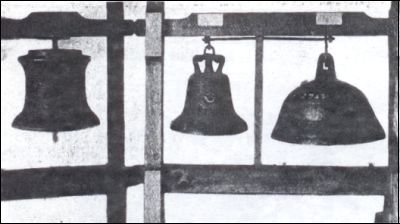|
 

AMONG the old occupations of Wigan were those of Potter, Pewterer, Brazier, Ironfounder, and Bell Founder. The pottery trade of Wigan flourished in the 17th and 18th centuries and many examples of the potter's art are still in being. John Dwight, the famous potter (1630-1698) founder of the Fulham Pottery, had a long connection with Wigan and his ceramic patents were taken out in 1671 and 1684 during his residence in this town. ONE of the most important of these lost trades was that of Bell Casting, which gave employment to many skilled artisans in the town in the 17th century and afterwards to the heads of the firms. It was then customary to take the metal to the place where the bell was wanted and there melt it and pour it into a place prepared for the casting in the church yard, but with the Wigan Bell Founders, it was not so. All the work was done at their own establishment in the town and the finished work despatched with several skilled men to assist in the hanging of it. The carts on which the bells were conveyed, were clumsy and the roads were exceedingly bad, so that the work was always done at very great risk. THERE were several firms in the town, but only one on a very large scale. The largest firm undoubtedly was that of the Scott family which existed in a prosperous state during the whole of the 17th century. The original firm was that of James and John Scott. Their superior workmanship was well known throughout the country and many bells made by them are still to be seen and heard. James and John Scott the original firm of Bell Founders were bailiffs in 1627 and in the year 1653, 1688 and 1701 members of the same family were Mayors. In the 18th century the Scotts gave place to the Ashtons, who, in order of Ralph, Luke and Ralph, were leaders in the trade for three-quarters of a century. TYPICAL examples of their work are illustrated above which are in possession of the Wigan Public Library. These may briefly be described as follows:- 1. Apothecary's mortar, cast by Like Ashton in 1740 (inverted and used as a sanctus bell).
2. House Bell from Standish Hall.
3. Large Gong from the Clock Tower, Standish Hall, cast by Luke Ashton, in 1743. It is known that there are still about thirty Churches in Lancashire, Cheshire and North Wales containing bells made by the Scott and Ashton families, which bells are still in existance. |
|